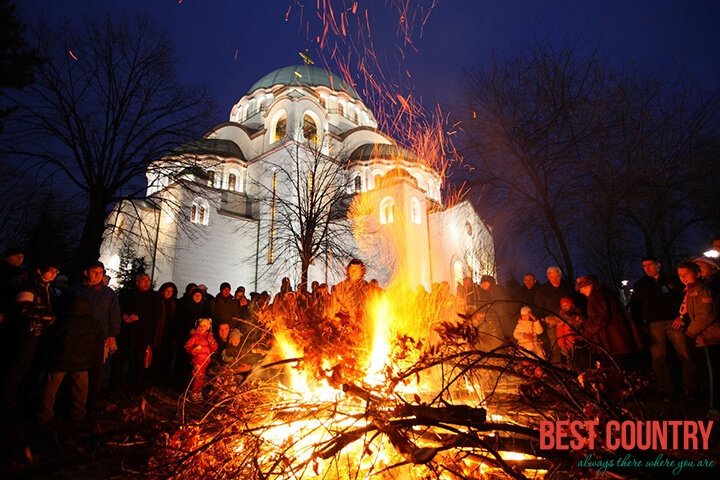Christmas in Serbia and Montenegro

On Christmas Eve, families gather and all families fast and don't eat food that comes from animals. It is the last day of the Christmas fast. Christmas is a very religious holiday and most people go to the Christmas Services.
There are a lot of old Serbian traditions associated with the countryside, which have now lost their meaning because more people live in towns and cities.
On the morning of Christmas Eve the father of the family used to go to the forest to cut a young oak called the 'Badnjak' (Christmas Eve tree) but today people just buy one. Under the table there should also be some straw as a symbol of the stable/cave where Jesus was born.
At Christmas a special kind of bread is eaten. It's called 'cesnica' and each member of the family gets a piece (and the house does too). There is a coin hidden in it and whoever gets the coin will be particularly fortunate in the next year!
In Serbian Happy/Merry Christmas is 'Srećan Božić', in the Cyrillic alphabet used in Serbia it's actually 'CPEЋAH БOЖИЋ'! Happy/Merry Christmas in lots more languages.
People in Serbia and Montenegro also celebrate St. Nicholas' Day, but on the 19th December.
During the time when Serbia and Montenegro was under communist control (after World War II until about 15 years ago), the communist government didn't like St. Nicholas or Santa Claus, so they had their own version called Grandfather Frost (Дедa Мрaз / Deda Mraz) or Christmas Brother (Божић Бата / Božić Bata), who came on New Year's Eve.
Traditional Serbian customs have also mixed with western customs. For example people also have Christmas Trees but they are decorated on New Year's Eve, not at Christmas!